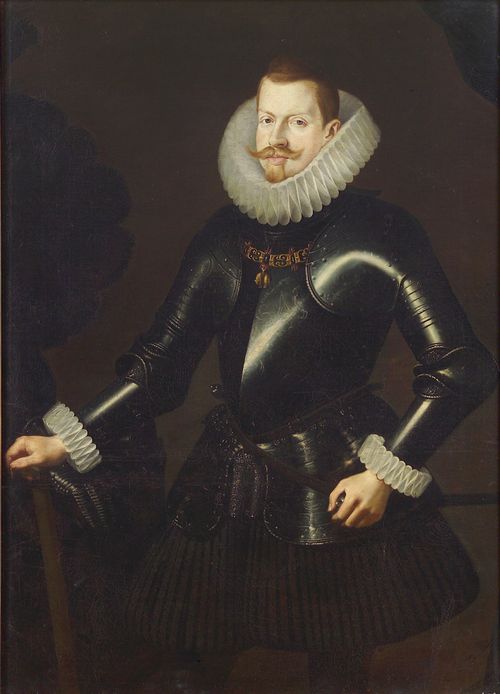Cob Coinage of Philip III
By Dave Busse
Philip III

Philip III, King of Spain and the Indies, was the son of Philip II and his fourth wife, Ana, daughter of Maximilian II, rector of Bavaria. Like his great grandmother Johanna, he ruled in name only, but for a different reason. She was deranged therefore, her son served as co-regent Philip III had a sound mind and was known for his extreme piety, but he was more concerned with affairs of court than matters of state. His monarchal activity, or lack thereof, continued the decline of Spain's power and influence that had begun during his father's reign which was most remembered for the defeat of the great Spanish Armada by England's naval forces in 1588. Philip III ruled from 13September 1598 until his death on 31 March 1621. Because of his lack of interest in statecraft, he named duke Lerma to handle governmental affairs. In 1609, the final expulsion of the Moriscos from Spain was decreed and caused an economic disaster. Following that fiasco was the loss of the valuable Northern Provinces (Netherlands) by granting them independence. When Lerma died in 1618 Philip, still rejecting his royal responsibilities, chose Lerma's son Uceda to implement Spain's internal and external policies. As a result of the economic difficulties at home, Spanish officials were even more interested in exploiting riches of the New World.
Assayers of the Mexico City Mint
Philip III coins are found with three different assayer's initials. They are in chronological order; F, A, and D. Unfortunately, that is about all we can surmise. Who they were and the exact dates they served are unknown at this time. We are aware that Melchor de Cuellar was appointed Foundryman and Chief Assayer on 29 January 1611 and confirmed on 8 May of the same year Pradeau, Numismatic History, p. 32. However, there are no known examples of Philip III coins bearing either an M or a C assayer's initial. It may be that information regarding the identity of the assayers exists in either Spanish or Latin American archives, but so far that information has not been recovered.
| Initial | Name | Began on | Left office on |
| F | |||
| A | |||
| D |
Mexican Coins Produced During the Reign of Philip III
Only silver cobs were produced at Mexico City during Philip III’s reign. Their fineness was 93.1% or 11 dineros, 4 granos. At that time, Spain did not use a decimal system for either if s monetary unit or fineness. Twelve dineros was pure silver. Each dinero was divided into 24 granos, thus 11 + 4/24 ÷12 = 0.93055. The denominations struck included ½, 1, 2, 4, and 8 reales. Between the years of 1598 and 1621, the Mexico City mint produced coins worth $74,300,000.00 bearing the name of Philip III. The official weights for the denominations produced are as follows:
| 8R | 27.4680 grams |
| 4R | 13.7340 " |
| 2R | 06.8670 " |
| 1R | 03.4335 " |
| ½R | 01.7168 " |
Many pieces, even Royal Strikes, are slightly under weight, and almost none are in excess of what they should be. (We can safely assume that the government then, as now, had no intention of giving away precious metal.) This may be explained in part by the fact that very few, if any, "mint state" examples exist, and one might even argue that coins that are no more than 0.1 grams light may have been within mint tolerances.Krause Publications, Standard Catalog of Mexican Coins, Paper Money, Stocks, Bonds and Medals says the proper weight for the 8R was 27.07 (actually 27.0642) grams and then halved for each lower denomination down to 1.69 (1.6915) for the ½R. However, those weights were not utilized until 1728 when the government authorized the lower amounts..
